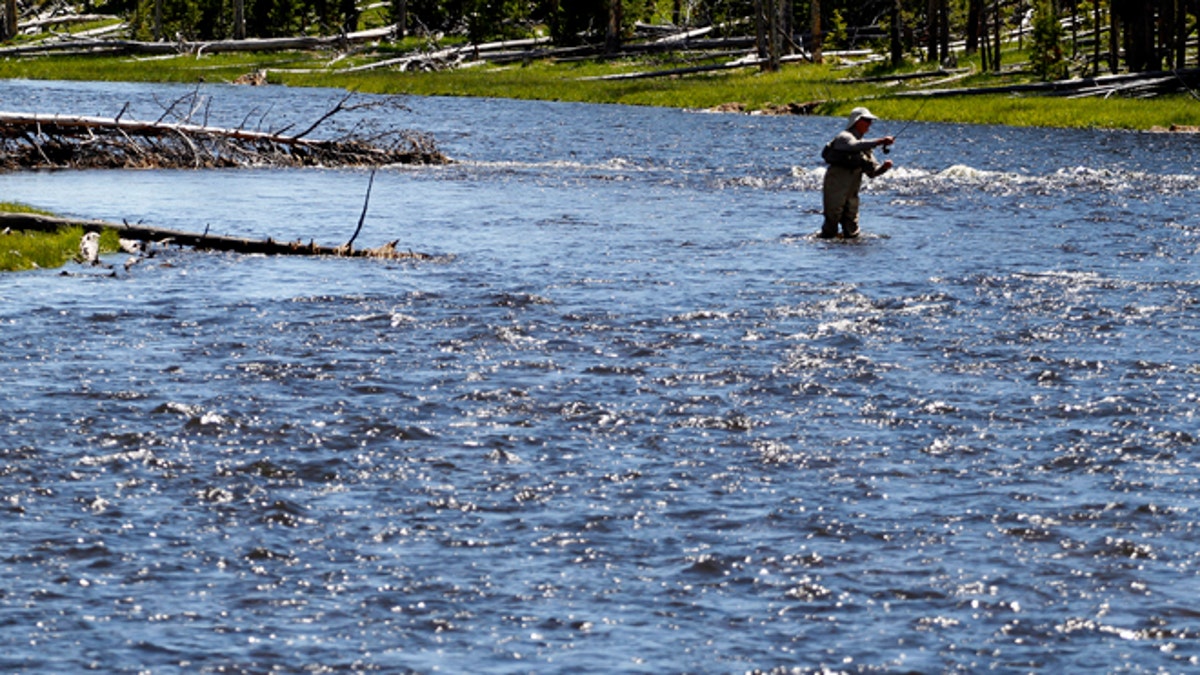
June 21, 2011: A fly fisherman on the Firehole River in Yellowstone National Park, Wyoming. (REUTERS)
Balancing on some boulders along the Lamar River here on a recent afternoon, Dave Hallac clutched his fly-fishing rod and reeled in one of the outlaws.
"This is the enemy here," the park's chief scientist said after a close inspection of the trout, which had a silvery body with pale pink streaks and black speckles. "A full-blown rainbow."
Rainbow trout have been swimming the waters of Yellowstone, the U.S.'s first-ever national park, for more than a hundred years since early park administrators introduced them to enhance the fish offerings. For decades, fishermen have reveled in catching the prized game fish.
But Yellowstone officials are now worried that the rainbow is pushing out a native fish, cutthroat trout, named after the distinctive blood-red slashes along its jawline. So to restore cutthroats, the park this year started requiring visitors to kill all other fish they hook in the Lamar and two of its tributaries where the native trout still exist.
The goal, said Mr. Hallac, who oversees Yellowstone conservation programs, is to increase cutthroat fish stocks, benefitting both the park's biodiversity and anglers' fortunes. But the restoration plan is controversial among some fish lovers, who fear it will reduce the overall number of fish—and the tourists they lure.
Every year, Yellowstone's lakes, rivers and creeks draw more than 40,000 anglers that feed a multimillion-dollar industry of tours, tackle shops and hotels, according to the park.
"It'll devastate the whole community and we won't be able to make our living," said Chris Herpin, a local fishing guide. Like him, most fly fishers release hooked fish back into the water to avoid depleting stocks.
The trout dispute is part of a broader struggle at Yellowstone as park officials try to fulfill a government mandate to return the park's wilderness to its original state when possible, while also paying respect to the way the attraction is used for recreation today. Park managers have figured out how to successfully bring back wildlife in numerous instances. But managing how the changes affect Yellowstone's surrounding communities has proved more difficult.
The bison population recovered from near extinction—and started knocking down fences when the big animals roamed outside the park. Wolves, which had disappeared from Yellowstone, are now back in healthy numbers—and killing off elk, hunters complain.
The cutthroat restoration program has the potential to alter the fishing industry around Yellowstone, which is nearly as old as the park, created in 1872.

